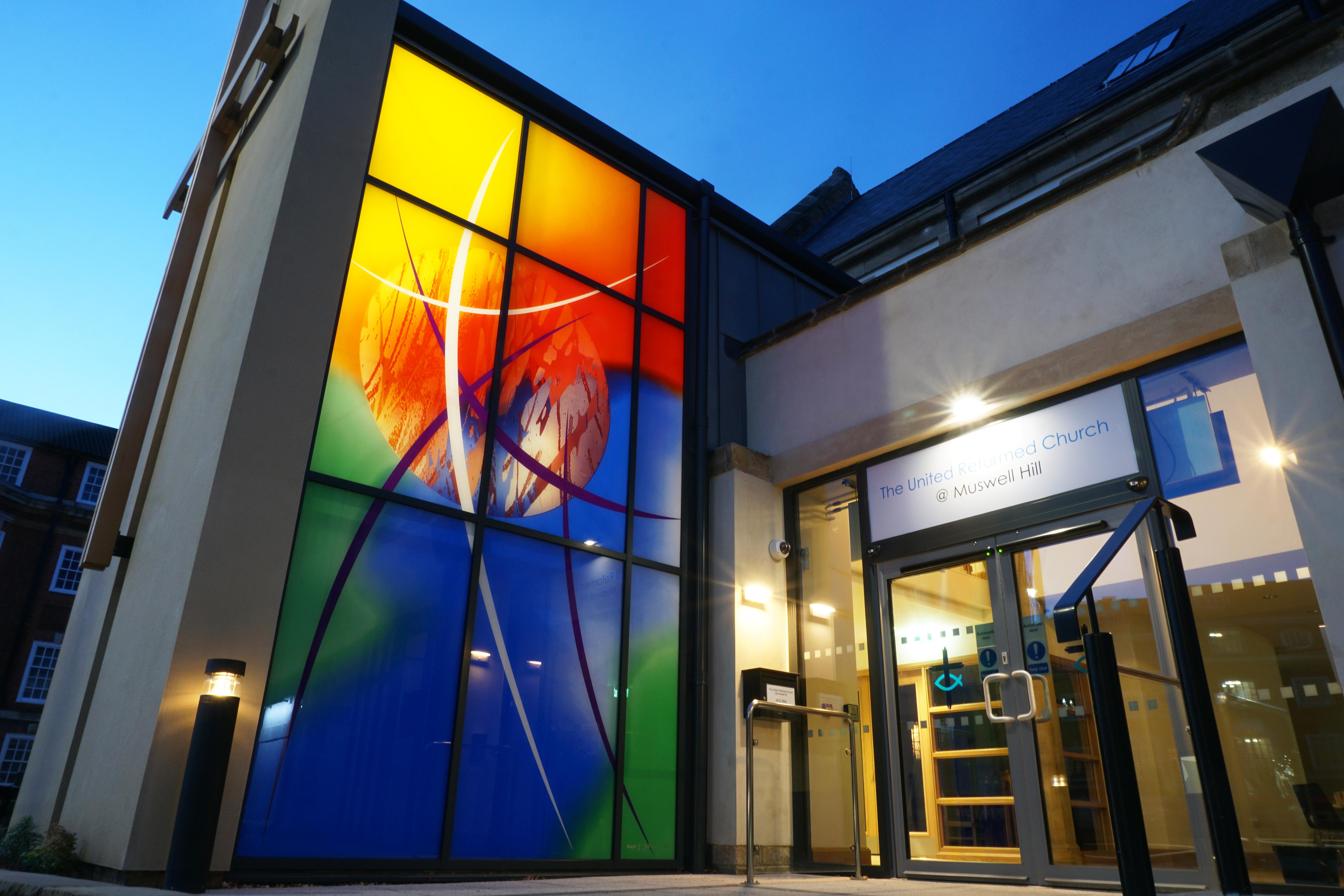Sarah Galloway is a contemporary artist specialising in architectural glass. She works from her well equipped riverside studio in Lancaster's historic Halton Mill. Sarah recently created the first major new work of art in Liverpool's Anglican Cathedral since the 1970's. In a special blog post she writes about why stained glass remains an important part of churches old and new.
As a glass artist it is a privilege to create works for churches and sacred spaces. Stained glass has been used for thousands of years, beginning with the ancient Romans and Egyptians, who produced small objects made from coloured glass.
In Britain stained glass windows can be traced back to the seventh century, with early examples found in churches and monasteries, whilst by the twelfth century processes had become more sophisticated.
During the Renaissance stained glass continued to be very popular throughout Europe whilst the style moved away from the Gothic of the middle ages into something more classical. The Reformation, however, led to the destruction of many stained glass windows, which were replaced with plain glass.
The nineteenth century saw a renewed interest in medieval churches, with more churches being built in the Gothic style and including elaborate stained glass windows depicting scenes from the Bible and other religious images. Buildings across Europe were also restored and a trend emerged for stained glass designs copied directly from famous paintings.
David Hockney
Recently David Hockney's commission for Westminster Abbey is an example of a renowned artist being given the opportunity to work in glass. Others include Marc Chagall, who undertook a number of stained glass commissions and John Piper, famous for creating the windows at Coventry Cathedral.
Despite the apparent prominence of male artists, by 1900 women had begun to have professional careers with many female stained glass artists having been educated in art schools.
Of note are Veronica Whall; Irish artists Wilhelmina Geddes, Evie Hone, and Catherine O'Brien; and Scottish artists Margaret Chilton and Marjorie Kemp. In recent years a number of female artists have established their practice and I am fortunate to be amongst a number of women creating windows and glass artworks for churches and religious spaces both in the UK and further afield.
Commissioning new stained glass
Despite the vicissitudes of the broader economy and changes in architectural tastes, the desire to commission glass for churches both old and new remains.
Once an appropriate budget has been identified, a church will seek to appoint an artist: some churches choose to invite a short list of artists to formulate initial designs for the new work, whilst others may create a competition.
Others will approach their favoured artist directly. Having appointed the artist the process of devising the brief for the artwork will commence. I personally believe that it is extremely important to have a close dialogue with my clients. I am only ever satisfied when they are pleased with the final results and being clear about the brief from the onset is essential.
Any themes or broader liturgical messages that the work will convey will be established at this stage, along with any preference for colours or processes adopted.
Having agreed the brief, initial paper designs will be created, with the final design being approved after an iterative process of feedback and amendment. At this stage I create full scale samples of glass for the client to see as it is imperative that they are able to understand how the final glass will look prior to embarking on the manufacture process.
Depending on the denomination of the church, further authority may need to be sought for the approval of the designs, including the Diocesan Advisory Committee within the Church of England, for example.
Exploring new processes
Fascinated as I am by the qualities of glass, as an artist I am always keen to explore new methodologies and processes. As such I define myself not as a stained glass artist but as an architectural glass artist. This title reflects the fact that in addition to windows I create other types of work including interior screens and external installations.
In 2020 I was privileged to be commissioned by the Josephine Butler Memorial Trust to create screens for the Lady Chapel at the Liverpool Anglican Cathedral, whilst at the C3 Church in Cambridge I designed and manufactured four large scale illuminated artworks for the exterior buttresses of the new building: with the associations of sacred space and decorative glass embedded within our collective understanding, the purpose of the contemporary structure is thus denoted both during daylight and night time hours.
These same qualities are also shared by the windows I created for the West Leigh Baptist Church in Essex, with the building known locally as 'the church with the glass', not least because of how my windows are illuminated at night from within. Whilst the use of glass in religious spaces has come a long way since the churches and monasteries of the seventh century, as both new churches are built and historical spaces renovated, the popularity of the medium is clearly assured.
View a photo gallery of some of Sarah Galloway's recent work
For more information, visit Sarah Galloway's website

